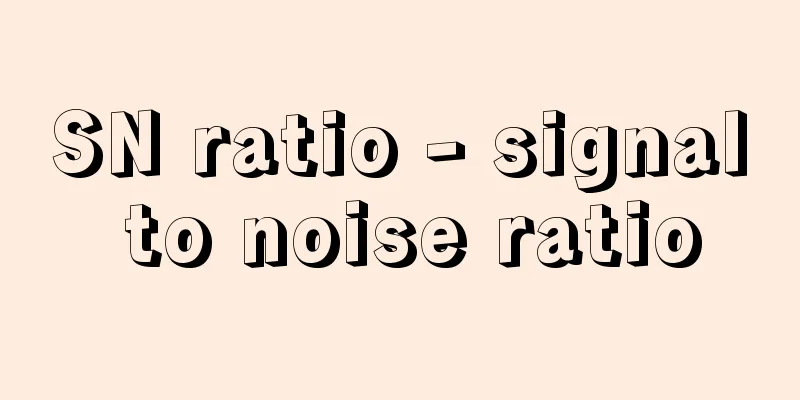Land improvement - tochikairyo (English spelling)

|
With the aim of increasing agricultural productivity, agricultural civil engineering methods are used to improve the physical and chemical conditions of the land, the shape of plots, etc., and this can be broadly divided into irrigation and drainage (dams, headworks, improvements to irrigation and drainage channels, pumps, culverts, hot water facilities), land readjustment, the improvement and reclamation of cultivated land such as adding soil, grassland improvement, reclamation, and the conservation of agricultural land such as preventing soil erosion. Furthermore, in recent years, with the trend toward mixed living in rural areas, the development of rural living environments has also been carried out in conjunction with these land improvement projects. Among the means of agricultural production, land and water provided by nature in particular are the basic conditions for fully realizing the effects of agricultural machinery, fertilizer, improved varieties, and other technological improvements for farming. For this reason, land improvement, or the development of production conditions related to land and water, is also called "agricultural infrastructure development," and is considered to be distinct from measures to improve other agricultural production means. Land improvement has been carried out continuously since ancient times in Japan along with the development of rice paddy agriculture. The results of ancient land improvement such as reservoirs and the jori system have been maintained by successive generations of farming and are still effective to this day. In this way, none of the natural features of the rural areas we are accustomed to seeing every day are untouched by human hands, and it is no exaggeration to say that nature that has been modified and preserved through agriculture and land improvement, such as rivers, roads, rice paddies, and fields, makes up the majority of the country's land area today. The effects of land improvement on agricultural production can be divided into two categories. The first is improved and stable land productivity. Among land improvement projects, irrigation and drainage projects often bring about this effect. The second is improved labor productivity. In particular, land improvement projects such as land readjustment, farm road construction, and dry-field construction promote agricultural mechanization and significantly reduce the amount of labor time invested in agricultural production. In particular, in order to respond to the recent supply and demand situation for rice, there is a strong demand for land improvement to turn paddy fields into cultivated land that also has the high productivity of field land (general-purpose cultivated land). Land improvement is a public project that targets land and water in a certain area, and the project is implemented by the parties involved in the project jointly, based on land connections and water systems. For this reason, the beneficiary farmers must apply to implement the project, and at the same time, the consent of two-thirds of all beneficiary farmers in the area is required (Land Improvement Act, enacted in 1949). Beneficiary farmers form a land improvement district, a kind of public association based on the Land Improvement Act, which implements land improvement projects, collects contributions, and maintains and manages the land improvement facilities that have been constructed. With the view that land improvement contributes to ensuring a stable food supply for the nation and the effective and appropriate development and conservation of national resources such as water and land, it is eligible for subsidies from the national government, prefectures, and other local public organizations, and various subsidy systems have been established. Due to the recent progress of mixed living in rural areas, it is becoming necessary to establish order in land use in rural areas and to promote the harmonious development of living environments and production infrastructure. Land improvement projects can create non-agricultural land such as residential land and public land at the same time as improving agricultural land, and are implemented in conjunction with other public work plans, strengthening the character of projects that contribute to the promotion of orderly regional development and the development of living environments in rural areas. [Yutaro Senga] [Reference items] | |Source: Shogakukan Encyclopedia Nipponica About Encyclopedia Nipponica Information | Legend |
|
農業生産性の向上を目的として、土地の物理・化学条件、区画形状などを農業土木学的手法を用いて改良することで、灌漑(かんがい)排水(ダム、頭首工(とうしゅこう)、用排水路改修、ポンプ、暗渠(あんきょ)排水、温水施設)、区画整理、客土など既耕地の改良と開拓、草地改良、干拓など農用地の開発ならびに土壌侵食防止など農用地の保全に大別される。さらに近年では、農村地域の混住社会化に伴って農村の生活環境の整備も、これら土地改良と一体的に行われるようになっている。 農業の生産手段のなかでも、とくに自然によって与えられる土地と水は、農業機械、肥料、品種改良、その他営農のための技術改良の効果を十全に発現させる基礎的条件をなす。このため、土地改良すなわち土地と水にかかわる生産条件の整備は「農業基盤整備」とも称されて、他の農業生産手段の改善措置と区分されて考えられている。 土地改良は日本では水田農業の発展とともに古来営々として継続的に行われてきた。溜池(ためいけ)や条里制など古代における土地改良の成果が、代々の営農によって維持されて、今日に至るまでなおその効果を発揮しているのが認められる。このように、われわれが普段見慣れている農村地域の自然風物のうち、人の手の加わらないものはなく、河川、道路、水田、畑など、農耕と土地改良によって改造され保全されてきた自然こそ今日の国土の大半を占めているといっても過言ではない。 土地改良の農業生産における効果は、次の二つに分かれる。第一は土地生産性の向上と安定である。土地改良事業のうち灌漑排水事業がこの効果をよくもたらす。第二は労働生産性の向上である。とくに区画整理や農道整備、乾田化などの土地改良事業によって農業の機械化が進展し、農業生産における投下労働時間の著しい減少が図られる。とくに近年の米需給関係に対応するために、水田を畑地としての高い生産性を兼ね備えた耕地(汎用(はんよう)耕地)にすることも土地改良に強く求められる課題となっている。 土地改良は一定の区域の土地と水を対象とする公共的事業であり、土地のつながりや水利系統により関係者が共同して事業の実施にあたる。このため事業を実施するには受益農家による申請が必要で、同時に区域内の全受益農家の3分の2の同意が必要とされる(1949年制定の土地改良法)。受益農家は、土地改良法に基づく一種の公共組合である土地改良区を結成し、この土地改良区が土地改良事業の実施や、その負担金の徴収、造成された土地改良施設の維持管理などを行う。土地改良が、国民食糧の安定確保、水・土地など国土資源の有効かつ適切な開発・保全などに寄与するとの観点から、国および県など地方公共団体による助成の対象とされて各種補助制度が設けられている。 昨今の農村における混住社会化の進展によって、農村地域における土地利用秩序の形成と、生活環境および生産基盤の整備との調和ある推進が必要となっている。土地改良事業は、農用地の改良と同時に、宅地、公共用地など非農用地の創設が可能であり、他の公共事業計画と一体的に実施されることによって、農村における秩序ある地域開発と生活環境整備の推進に資する事業としての性格を強くしている。 [千賀裕太郎] [参照項目] | |出典 小学館 日本大百科全書(ニッポニカ)日本大百科全書(ニッポニカ)について 情報 | 凡例 |
<<: Land improvement machinery - Tochikairyokikai
>>: Land Reform - Tochikaikaku
Recommend
Hippocampus mohnikei (English spelling) Hippocampusmohnikei
…[Isao Hanyu]. … *Some of the terminology that me...
Ionosphere - denriken (English spelling)
In the upper atmosphere, the degree of ionization...
Argeles - Argeles
…In the north, 750 hectares of leisure facilities...
Enamelling
A composite craft in which glass glaze is baked on...
Winter - Fuyu (English spelling)
The fourth season when the year is divided into f...
Solfege (English spelling) solfège French
It is one of the basic music education, and it is...
Gold mark - Kinmaruku
…Germany traditionally had strong state power, an...
Air refueling - air refueling
Aerial refueling is the transfer of fuel from one...
Ozzy Arch - Oji Arch
...two-core arch), Tudor arch (a crushed pointed ...
Hayashi Yuteki
Year of death: February 18, 1901 (Meiji 34) Year o...
Wet printing
In color printing, for example when printing four ...
Kinnole - Kinnole
…The Old Testament also lists many musical instru...
Wariyama
A system of usufruct for forests and wilderness th...
Koryŏng kobungun (English name)
It is located in Goryeong-myeon, Goryeong-gun, Gye...
Child Labor/Juvenile Labor
In a broad sense, child labor refers to work done ...









